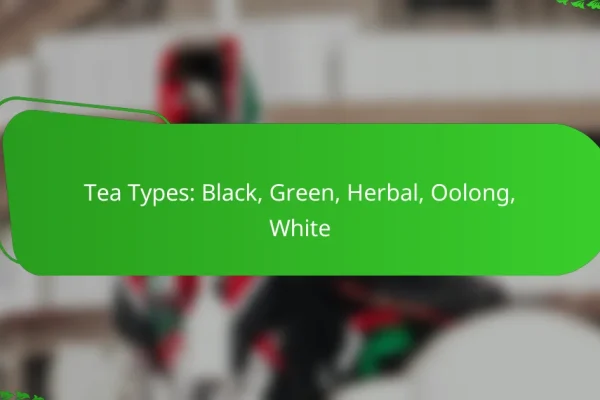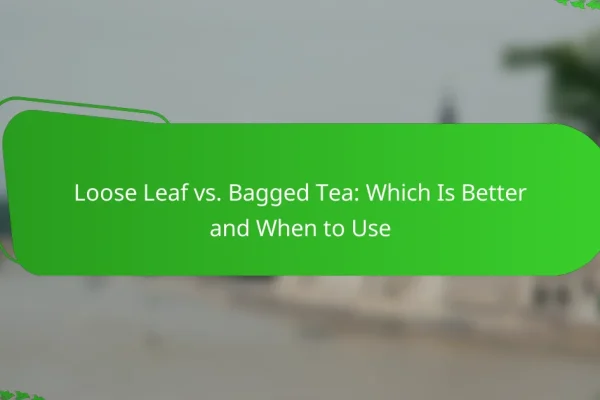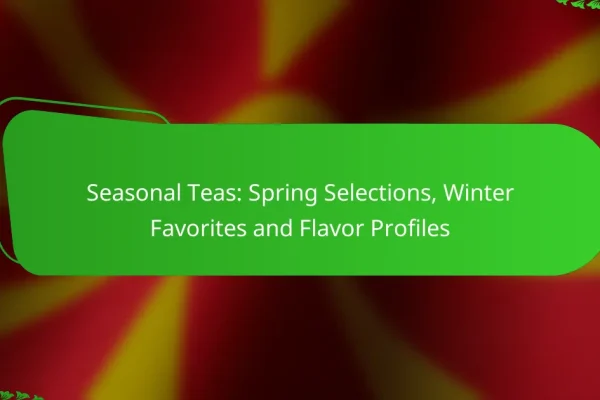What types of tea are best for parties in the UK?
For parties in the UK, a variety of tea types can cater to different tastes and preferences. Popular choices include black, green, herbal, and specialty teas, each offering unique flavors and experiences that can enhance your gathering.
Black tea varieties
Black tea is a classic choice for UK parties, known for its robust flavor and versatility. Varieties such as English Breakfast and Earl Grey are particularly popular, often served with milk or lemon. Consider offering a selection to accommodate different palates.
When serving black tea, aim for a brewing time of 3-5 minutes to achieve optimal flavor. Providing sugar and milk on the side allows guests to customize their drinks according to their preferences.
Green tea options
Green tea offers a lighter alternative to black tea and is appreciated for its health benefits. Varieties like Sencha and Jasmine Green Tea can add a refreshing touch to your party. These teas are typically served without milk, allowing their delicate flavors to shine.
For best results, steep green tea for 2-3 minutes in water that is not boiling, around 70-80°C. This helps preserve the tea’s natural qualities and prevents bitterness.
Herbal tea selections
Herbal teas are caffeine-free and come in a wide range of flavors, making them suitable for all guests. Popular options include chamomile, peppermint, and rooibos. These teas can be enjoyed hot or iced, providing flexibility for your party setting.
When serving herbal teas, consider offering a variety of sweeteners, such as honey or agave syrup, to enhance the flavors. Herbal teas can also be brewed in larger quantities for easy serving.
Specialty teas for events
Specialty teas can elevate your party experience, offering unique flavors and presentations. Consider options like chai, matcha, or bubble tea, which can be a fun addition to your beverage selection. These teas often require specific preparation methods, so plan accordingly.
For instance, chai is typically brewed with spices and milk, while matcha requires whisking with hot water. Providing a demonstration or a DIY station can engage guests and make the tea experience memorable.
How to choose tea based on guest preferences?
Choosing tea based on guest preferences involves understanding their caffeine tolerance, flavor likes, and dietary needs. This ensures that everyone enjoys a suitable beverage during your party.
Assessing caffeine preferences
Caffeine sensitivity varies among individuals, so it’s essential to gauge your guests’ preferences. Some may prefer caffeine-free options, while others enjoy the stimulating effects of black or green teas.
A good rule of thumb is to offer a mix of caffeinated and herbal teas. For example, include one or two black teas, a green tea, and a couple of herbal varieties to cater to different preferences.
Considering flavor profiles
Flavor profiles play a significant role in tea selection. Some guests may favor floral notes, while others might prefer earthy or fruity flavors. Understanding these preferences can enhance their experience.
Consider offering a variety of teas such as chamomile for a soothing floral option, chai for a spiced experience, and a fruity blend like berry hibiscus. This variety allows guests to explore different tastes and find their favorites.
Accommodating dietary restrictions
Dietary restrictions can impact tea choices, especially for guests with allergies or specific diets. Always check for any known allergies to ingredients like nuts or gluten, which may be present in flavored teas.
Additionally, consider providing options that are naturally caffeine-free and free from common allergens. Herbal teas, such as peppermint or rooibos, can be excellent choices that cater to various dietary needs without compromising on flavor.
What are the best tea brands for gatherings?
When selecting tea brands for gatherings, consider options that offer a variety of flavors and quality. Popular choices include Twinings, Yorkshire Tea, and Pukka Herbs, each providing unique blends that cater to different tastes and preferences.
Twinings tea range
Twinings is renowned for its extensive selection of teas, making it a great choice for parties. Their offerings include classic black teas, herbal infusions, and green teas, ensuring there’s something for everyone. Popular blends like Earl Grey and English Breakfast are often crowd-pleasers.
When serving Twinings at your gathering, consider providing a selection of their tea bags alongside milk, sugar, and lemon for customization. This allows guests to tailor their drinks to their liking, enhancing their experience.
Yorkshire Tea options
Yorkshire Tea is celebrated for its robust flavor and quality, particularly among black tea enthusiasts. Their traditional blends, such as Yorkshire Gold, are crafted to provide a strong, refreshing cup that pairs well with snacks and meals.
For gatherings, consider brewing Yorkshire Tea in a large pot to serve family-style. This approach not only saves time but also encourages conversation as guests help themselves. Offering a choice between the standard and decaffeinated versions can accommodate different preferences.
Pukka Herbs selections
Pukka Herbs specializes in organic herbal teas, making them an excellent choice for health-conscious guests. Their blends, such as Detox and Night Time, are crafted with natural ingredients that promote wellness and relaxation.
To enhance your gathering, create a tea station featuring Pukka’s herbal options. Provide hot water and a variety of flavors, allowing guests to explore different herbal infusions. This interactive element can spark discussions about the benefits of each blend.
How to prepare tea for a large group?
Preparing tea for a large group involves planning the quantity, type, and brewing method to ensure everyone enjoys a fresh cup. Consider the preferences of your guests and the logistics of serving, such as timing and equipment.
Brewing methods for large quantities
When brewing tea for many, consider using a large teapot, urn, or a commercial tea brewer. These methods allow you to steep multiple servings at once, saving time and ensuring consistency in flavor.
For loose leaf tea, a general guideline is to use about 1 teaspoon per cup, adjusting based on the type of tea and desired strength. If using tea bags, typically one bag per cup works well, but check the packaging for specific recommendations.
Serving temperature guidelines
The ideal serving temperature for tea varies by type: black tea is best at around 90-100°C (194-212°F), green tea at 70-80°C (158-176°F), and herbal teas can be served at boiling point. Using a thermometer can help achieve the right temperature for each type.
Allowing tea to cool slightly after brewing can enhance the flavor and prevent scalding. Keep in mind that serving temperature can also affect the perception of taste, so aim for a comfortable drinking temperature for your guests.
Presentation tips for tea service
Presentation plays a key role in the tea experience. Use attractive teapots and cups, and consider adding garnishes like lemon slices or fresh mint to enhance the visual appeal. A well-set table with a variety of teas can invite guests to explore different flavors.
Labeling each tea option helps guests choose according to their preferences. You can use small cards or tags to indicate the type of tea and its flavor profile, making the selection process easier and more engaging.
What are the costs associated with tea for parties?
The costs associated with tea for parties can vary significantly based on the type of tea, quantity needed, and additional supplies. Generally, you should consider the price of tea leaves or bags, accessories like teapots and cups, and any snacks or accompaniments.
Budgeting for tea purchases
When budgeting for tea purchases, start by determining the number of guests and the type of tea you want to serve. Premium loose-leaf teas can range from $10 to $30 per ounce, while standard tea bags may cost between $5 and $15 for a box of 20.
Consider whether you will offer a variety of teas, which can increase costs. A good rule of thumb is to budget around $2 to $5 per guest for tea alone, depending on your selections. Don’t forget to include costs for sugar, milk, and snacks, which can add another $1 to $3 per person.
To avoid overspending, create a checklist of necessary items and prioritize your purchases. Look for bulk options or local tea shops that may offer discounts for larger quantities. This approach can help you stay within your budget while still providing a delightful tea experience for your guests.












